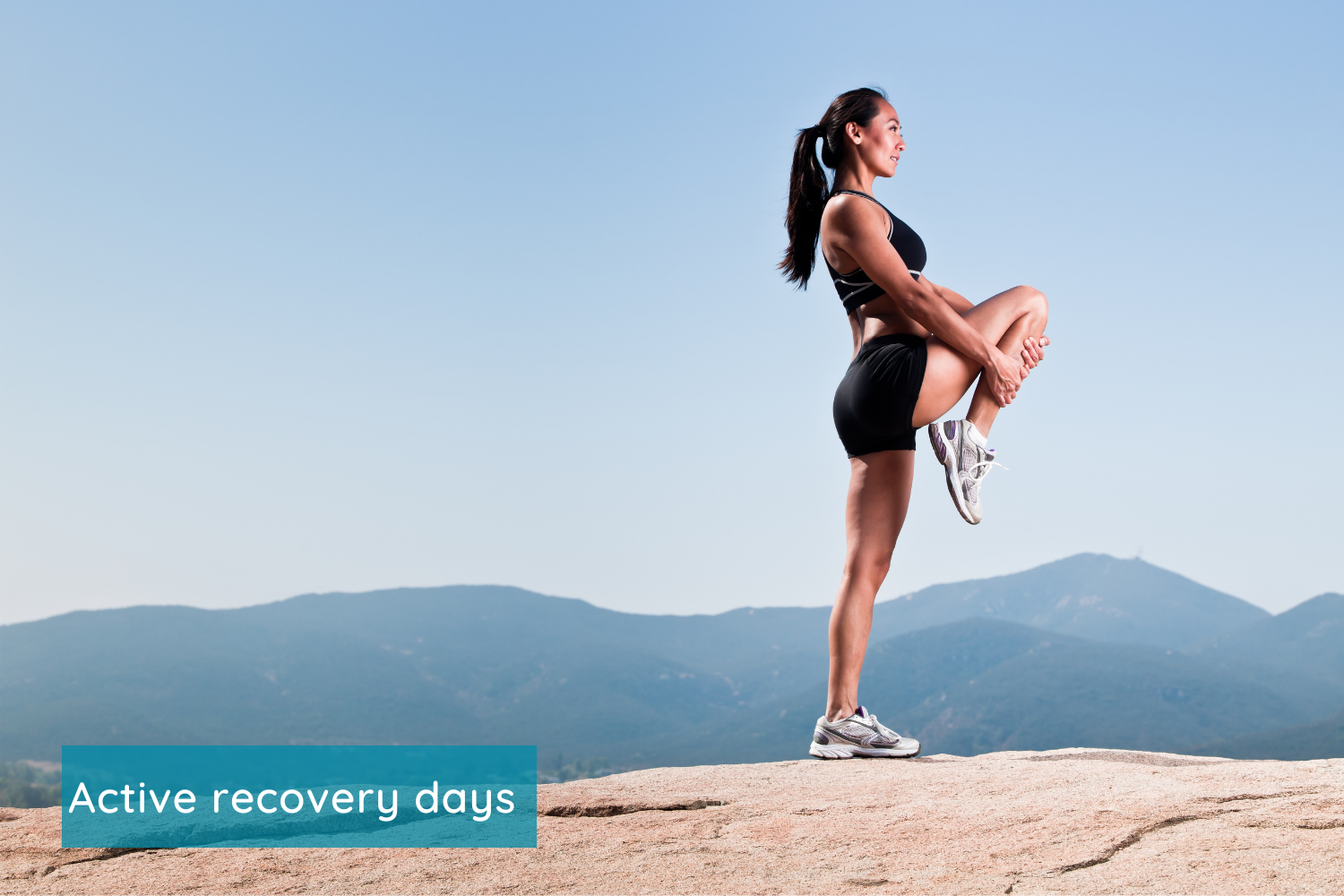Active recovery days

What is active recovery?
Recovery from exercise is crucial as this is where the adaptations and improvements occur. Enhancing the recovery process will help you maintain optimal performance in your next workout. Active recovery is a beneficial practice that can help speed up the recovery process. An active recovery session involves performing some form of low-intensity exercises, such as light jogging, swimming, or yoga. These sessions are best performed on your usual rest days in between more intense workout days.
Why have active recovery days?
There are numerous benefits to incorporating active recovery days into your exercise routine. These sessions aim to speed up recovery from workouts. Performing low-intensity exercise helps to improve blood flow. The increased circulation helps bring nutrients to repair and rebuild the muscles.
These sessions also help with eliminating waste and toxins built up in the muscle during workouts. Reducing lactic acid will help you feel less stiff and sore. There are mental health benefits too! An active recovery day can help you feel relaxed and is a break from more intense physical activity.
How to perform an active recovery session
There are several activities you can choose to perform on your active recovery days. The most important thing is to pick an exercise that is low-intensity. A low-intensity workout should keep you between 30-60% of your maximum heart rate. We don't all have access to heart rate monitors, so using the "talk-test" can be a helpful substitute. Active recovery is most likely at the appropriate intensity if you can maintain a conversation while engaging in the exercise.
A typical active recovery session generally lasts between 15-40 minutes, depending on your current fitness levels and the intensity of the training performed the day before.
What activity should I choose?
The best activity to choose would be something you enjoy doing. As long as it is low-intensity, it will generally be suitable.
Swimming is a great option. It is a low-impact exercise that places little stress on the joints. It can be done either indoors or outdoors. Hiking is also a great idea if you are looking for an outdoor activity. Hiking can benefit you both mentally and physically. Getting out in nature and breathing fresh air can help boost your mood!
Yoga is a popular choice. Choosing Yoga can help with flexibility, mobility and stability while recovering from an intense workout. Using a Yoga Wheel, such as the Huku Moons Yoga Wheels, can be a great way to boost yoga practice. They can help you safely try more advanced postures that you might not be comfortable performing without support from the yoga wheel. The wheel supports you during backbends, allowing you to roll the wheel up and down your spine for a full spinal massage.
Conclusion
Active recovery sessions help to boost the recovery process, where all the important adaptations and improvements from exercise occur. These sessions help increase blood flow, reduce toxins, and help you feel less stiff. The session should be performed at a low-intensity for 15-40 minutes. There are many activities that you can choose from. Swimming, hiking, and yoga are excellent choices.







